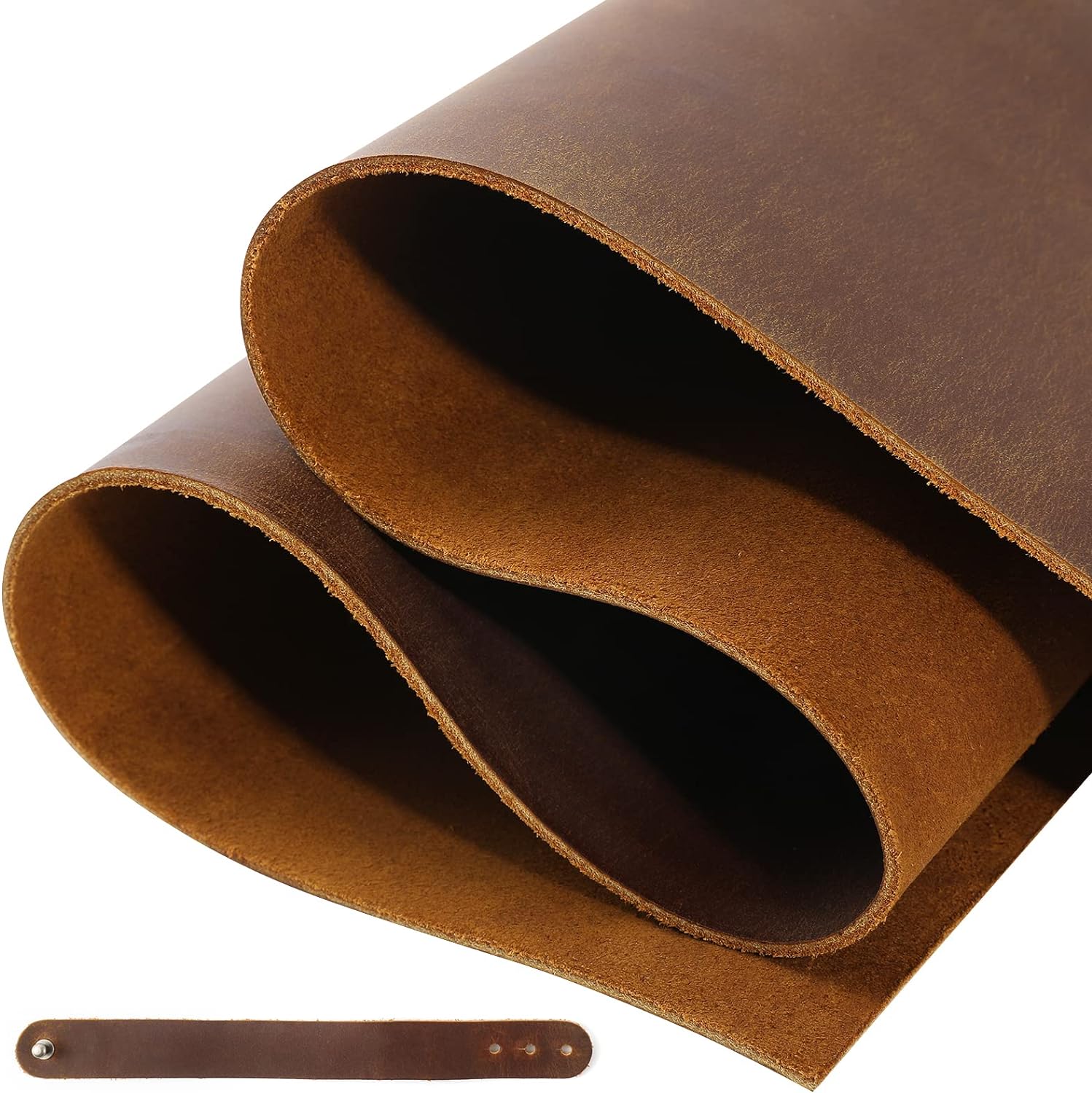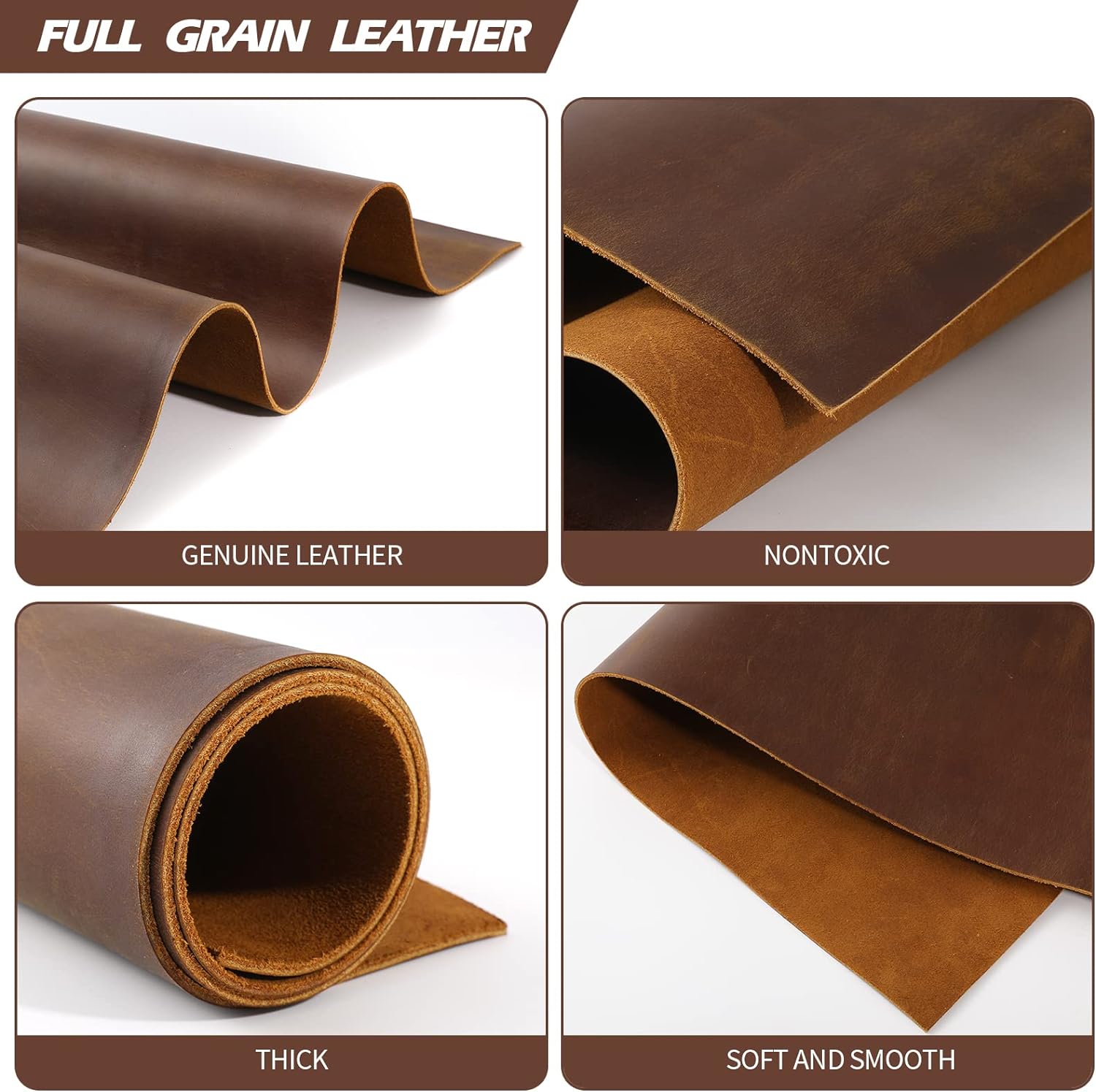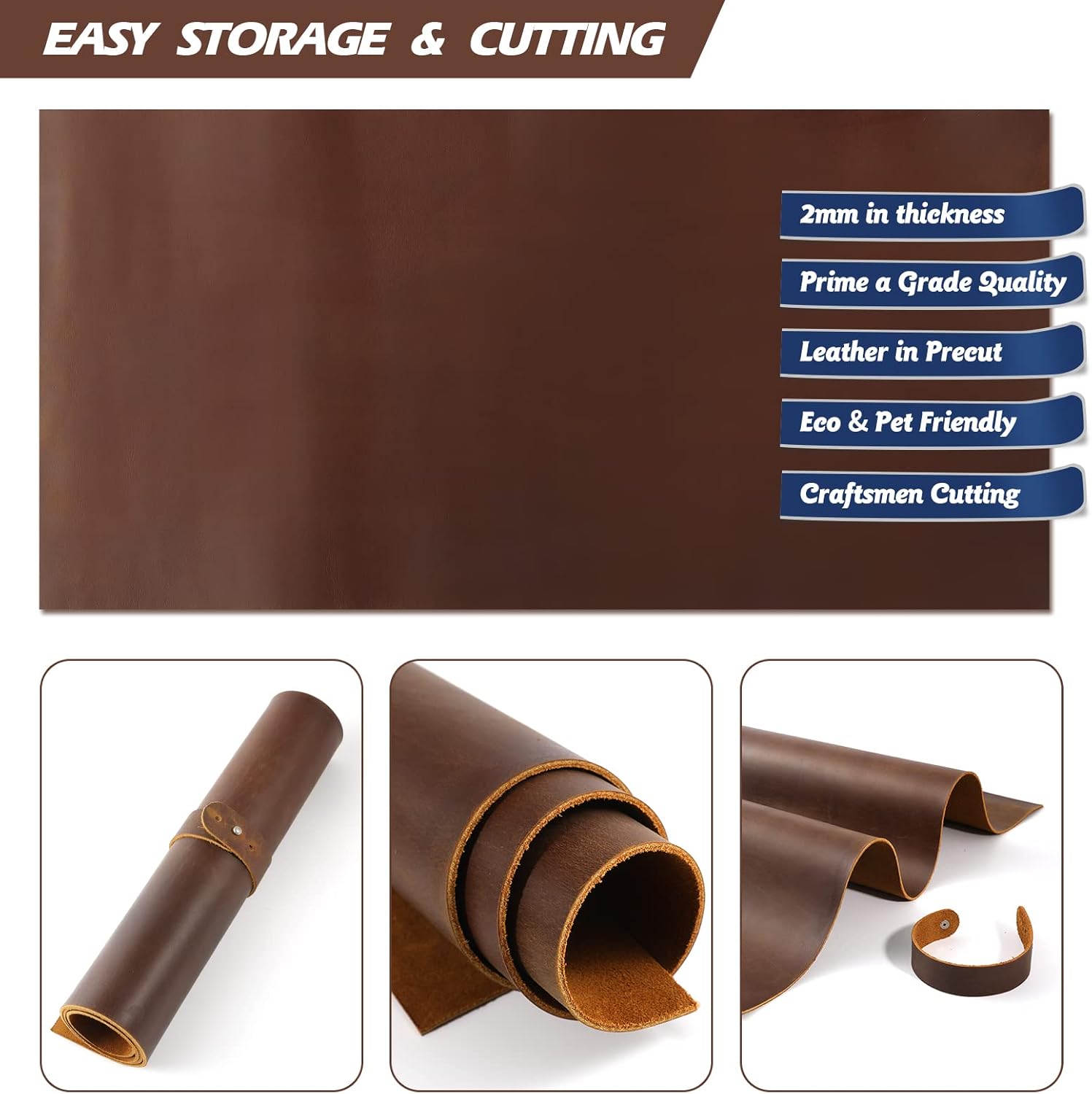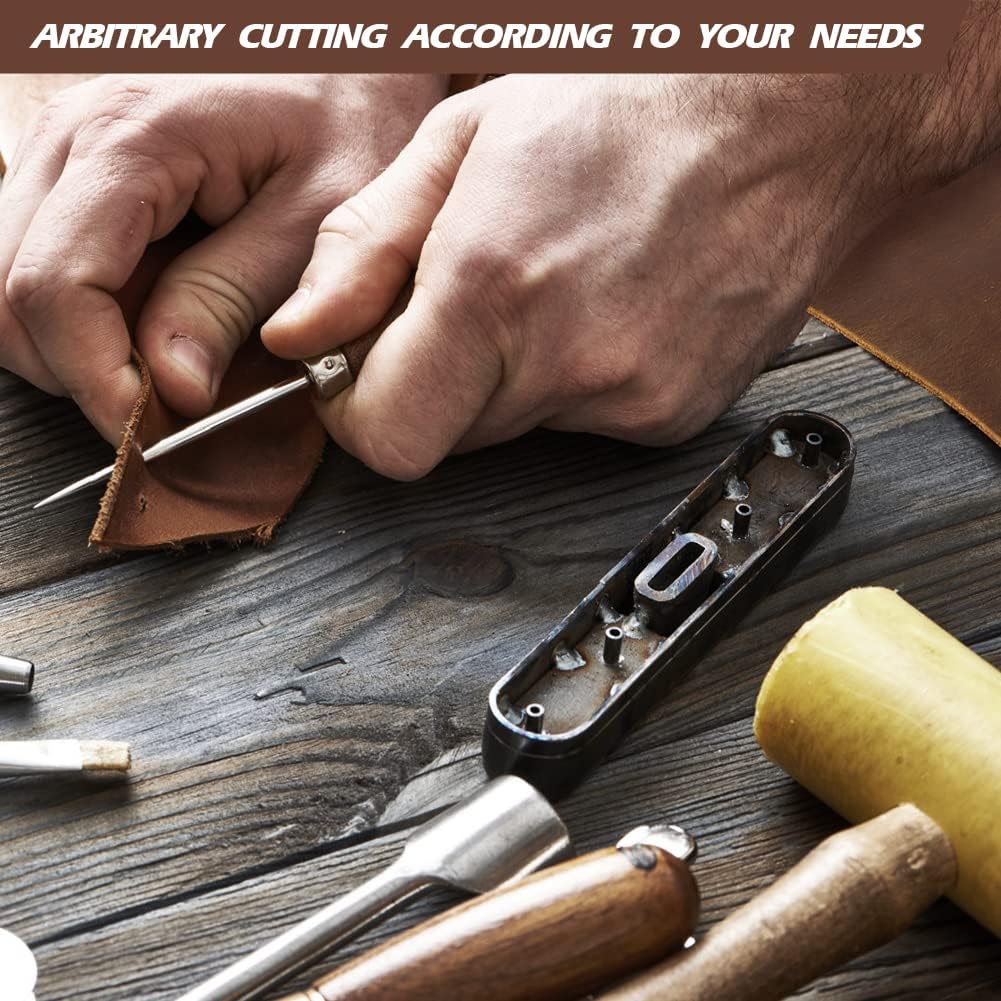Add Your Heading Text Here

Full Grain Leather: thickness(2mm – 2.2mm)
is the top layer of the hide. It is treated with aniline dyes which are soluble and do not mask the hide’s natural surface. Sometimes a semi-aniline dye is used which will give the leather a thin protective top coat and prevent staining. The vertical fi6bres of this part of the leather make it the strongest and most durable part of the hide, it will not crack or peel, tear or puncture. The grain pattern is tight and consequently resistant to moisture. Part of the beauty of Full Grain leather is its unique appearance
Full grain with a thickness of 2mm to 2.2mm is known for its durability, strength, and natural appearance. This type of leathr is made from the outermost layer of the hide, preserving the original grain and imperfections, which add character and uniqueness. Due to its thickness, it is often used in high-quality products such as belts, shoes, bags, and furniture, offering superior resilience and aging gracefully over time. The thickness enhances its toughness, making it suitable for items that require long-lasting wear and tear resistance
Top Grain Leather : thickness (1.8+mm – 2mm)
Rather confusingly, this is not the top layer of the hide but the second layer. The surface of the leather has been removed by sanding and buffing in order to remove the ‘imperfections’. This gives the leather a more uniform appearance but it also means that the leather is much less durable than Full Grain and that it will deteriorate much faster. Top Grain is the most commonly used leather for the production of quality goods because it is thinner, more pliable and less expensive than Full Grain. A variant of Top Grain leather is ‘Corrected’ . This is Top Grain which has gone through an extensive process of sanding, buffing, stamping and dyeing in order to achieve a uniform appearance in which all natural markings have been removed.


Nubuck Leather : thickness(1.8mm-2mm)
Nubuck is Top Grain which has not been processed but the surface has been brushed and polished so that the short protein fibres produce a velvet surface. Similar to suede, but more expensive, the lush surface will change shade when you run your hand over it. Stronger and thicker than suede it can be white or coloured and dyed. It has a rougher appearance than suede and may retain natural markings.
Suede thickness(1.6mm-2mm)
Suede is made from the inner layer of the hide, the side originally in contact with the flesh of the animal. The surface is sanded and buffed and the resulting is softer and more flexible than Nubuck, but not nearly as tough. Its absorbent surface makes it vulnerable to staining.


